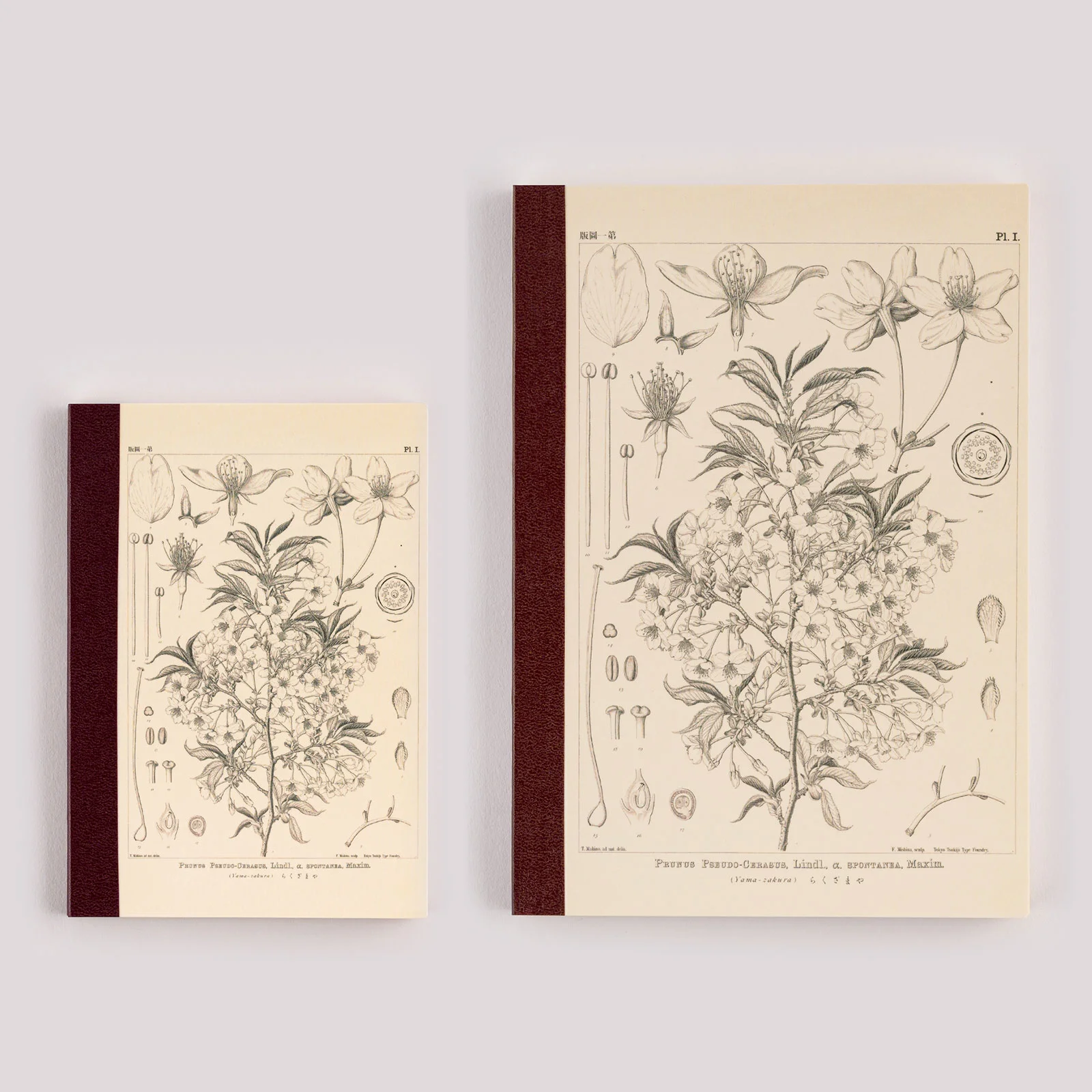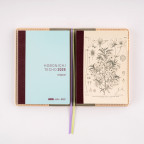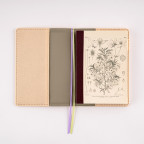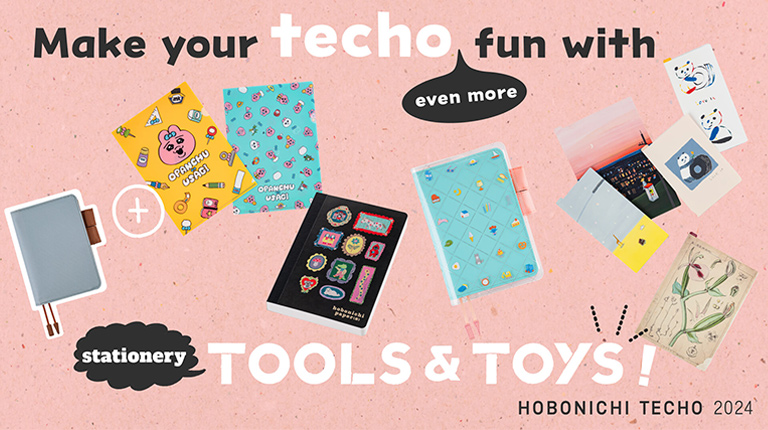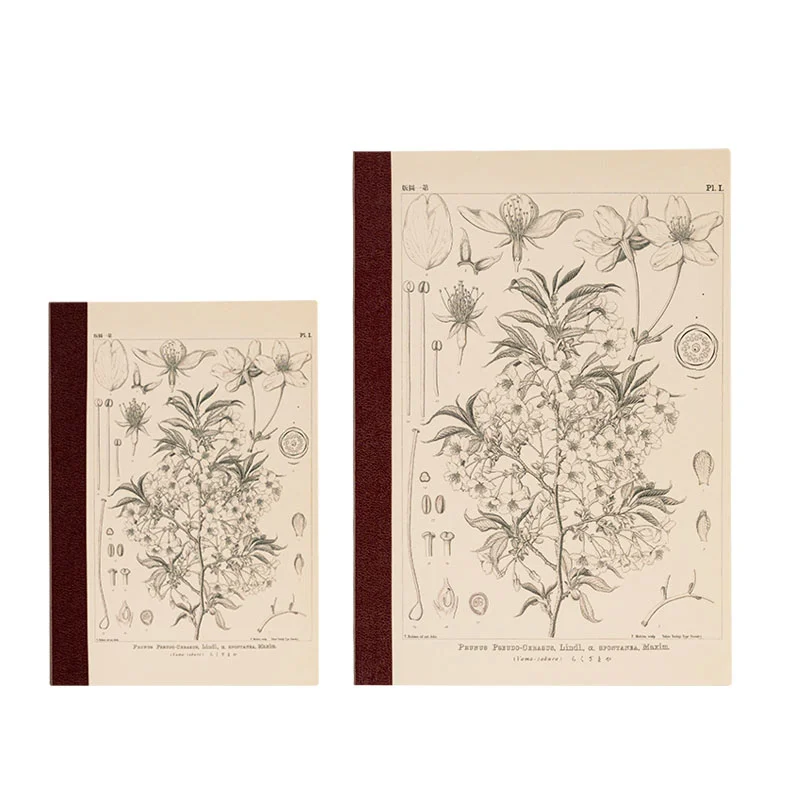- $24.00 $24.00 $24.00 $29.00 $24.00 $24.00 $29.00 $26.00 $20.00
- $58.00
- $39.00 $39.00 $39.00 $44.00 $29.00
- $41.00
- $29.00
- $20.00
Tomitaro MakinoHobonichi Graph Notebook - YamazakuraA6 Size / A5 Size
*We renamed this product from the Hobonichi Plain Notebook to the Hobonichi Graph Notebook from the 2025 edition.
We introduced the Hobonichi Graph Notebook in 2019 in response to requests for a standard notebook that feels just like the Hobonichi Techo. The cover features a botanical illustration by Dr. Tomitaro Makino, a botanist known as the Father of Japanese Botany.
The drawing of cherry blossoms drawn with precise lines to the last detail is the first illustration of “Yamazakura,” meaning “mountain cherry,” which is the opening illustration of the first volume of his “Flora Japonica” book published in 1900. Dr. Tomitaro Makino’s drawing of the Yamazakura cherry tree as a symbolic Japanese plant is characterized by its dazzlingly detailed line drawings.
The botanical illustrations, born from a keen eye for observation, knowledge, and experience, make this notebook an ideal companion for your daily life.
The illustrations that have become one of Dr. Makino’s masterpieces were drawn about 120 years ago during the Meiji Era, using loupes and microscopes for detailed observation and creating drawings that show the entire shape of the Yamazakura branches, shapes of the petals, and structures of various parts. Using a Makie painting brush with a bundle of mouse hairs, they are expressed clearly through shading that conveys the solidity of the flower's living petals.
The notebook has thin and durable Tomoe River paper and opens completely flat. It comes in two sizes: A6 to match the Original, and A5 to match the Cousin. The A6 size notebook is 8mm thick and contains 240 pages, while the A5 size is 10mm thick and contains 288 pages. This gives you plenty of space to fill the notebooks to your heart’s content.
The 3.7 millimeter graph paper is the same as that of the Hobonichi Techo Original. The color of the ink on the page changes (red / blue / green / purple) every 60 pages in the A6 size, and every 72 pages in the A5 size. This makes it easy to split the book into several themes or use the colors as a way to more easily find old entries.
Because the book sizes match the A6 Original and A5 Cousin Hobonichi Techos, you can use these notebooks with a techo cover. The cover is great for storing items like pens or sticky notes, and provides a very convenient user experience.
The notebook is a great supplement to the Hobonichi Techo, or simply a smaller-size notebook to keep by your side for filling with lots of writings or drawings.
About Botanist Tomitaro Makino
Born April 24, 1862 in present-day Sakawa Town, Kochi Prefecture. Raised in the rich natural surroundings of Tosa City, he began to study botany independently as a young child. Moved to Tokyo and devoted himself to botanical research through the Department of Botany at Tokyo University’s Faculty of Science.
Founded “The Botanical Magazine” with a close friend; they collaborated to publish their discovery of the flowering plant Yamatogusa in 1889. Collected over 400000 specimens during his 94-year lifespan, and named over 1500 discovered species. Known as the “Father of Japanese Botany.”
Information provided by the Makino Botanical Garden.
Staff List
- Photographer
- Product Detail: Hiroyuki Oe
![]()
- Tomitaro MakinoHobonichi Graph Notebook - YamazakuraA6 Size / A5 Size
- $11.00 - $14.00(incl. tax)
Specifications
- A6 Size
Size H: 148 x W: 105 x T: 8 mm / H: 5.8" x W: 4.1" x T: 0.3" Weight Approx. 117 g Main material Paper - A5 Size
Size H: 210 x W: 148 x T: 10 mm / H: 8.3" x W: 5.8" x T: 0.4" Weight Approx. 278 g Main material Paper
Please Read Before You Buy
In order to provide you with the most satisfaction for your product, we've compiled a list of warnings, potential issues, and tips to keep in mind for this particular product. Please be sure to read this information carefully before placing your order.
- Test fountain pens before regular use
The Hobonichi Techo's Tomoe River paper is designed to prevent bleed-through, but some fountain pens and water-based ink pens are not compatible with this paper. When switching to a new pen, we recommend testing the pen somewhere in the book, such as the back memo pages, to see if the ink bleeds through or takes an especially long time to dry.
User recommendations
If you’ve used any of these products, we welcome your notes on what you like about them or what led you to buy them so we can share it with customers who are currently considering these products. We’d also love to welcome comments from customers who purchased their techo outside the Hobonichi Store or received their book as a gift.

